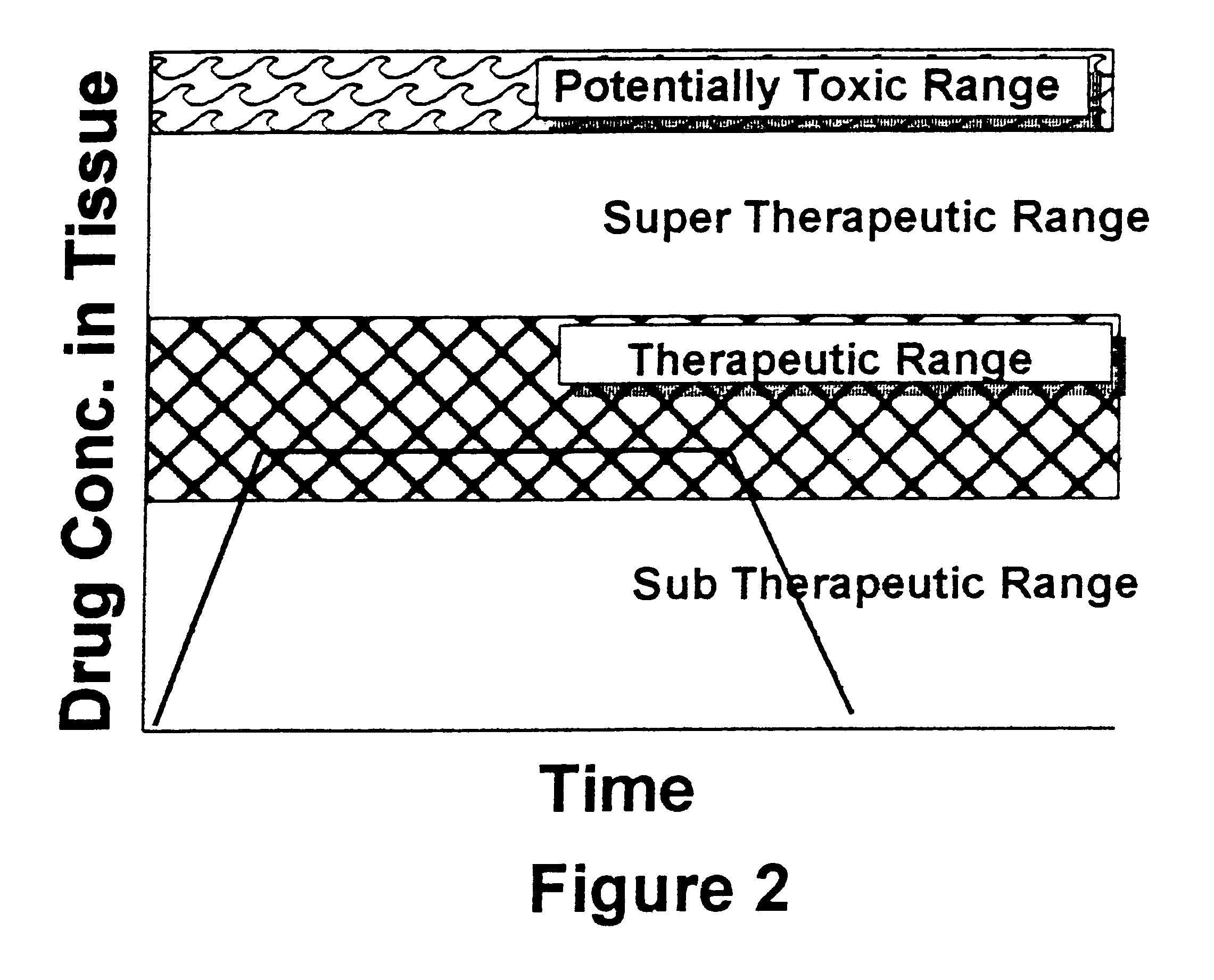Use of biologically active glass as a drug delivery system
a biologically active glass and drug technology, applied in the field of biologically active glass as a drug delivery system, can solve the problems of ineffective systemic drug delivery, difficult local drug delivery, if not impossible,
- Summary
- Abstract
- Description
- Claims
- Application Information
AI Technical Summary
Problems solved by technology
Method used
Image
Examples
Embodiment Construction
As used herein the term "drug" has its usual meaning and includes, but is not limited to, analgesics, local anesthetics, antibiotics, steroids, anti-tumor agents, hormones, and hormone-like agents. "Bone replacement material" is a substance that fills space left when bone is remove by injury or surgery, which aids in forming an adhesion between adjacent healthy bone and which is replaced by osteoblasts during the bone healing and remodeling process, and, as used herein, is synonymous with "bone matrix material." The terms "biologically active ceramic," "biologically active glass," and "biologically active ceramic-glass" refer to inorganic material containing an oxide of silicon as the predominate component which is altered slowly by tissue fluids and which is remodeled during formation of new bone.
As used herein the terms "microencapsulate" and "micro capsules" refer to solid, colloidal, or liquid drug contained within a coating of a material which dissolves or degrades in a physiol...
PUM
| Property | Measurement | Unit |
|---|---|---|
| pH | aaaaa | aaaaa |
| composition | aaaaa | aaaaa |
| area | aaaaa | aaaaa |
Abstract
Description
Claims
Application Information
 Login to View More
Login to View More - R&D
- Intellectual Property
- Life Sciences
- Materials
- Tech Scout
- Unparalleled Data Quality
- Higher Quality Content
- 60% Fewer Hallucinations
Browse by: Latest US Patents, China's latest patents, Technical Efficacy Thesaurus, Application Domain, Technology Topic, Popular Technical Reports.
© 2025 PatSnap. All rights reserved.Legal|Privacy policy|Modern Slavery Act Transparency Statement|Sitemap|About US| Contact US: help@patsnap.com



